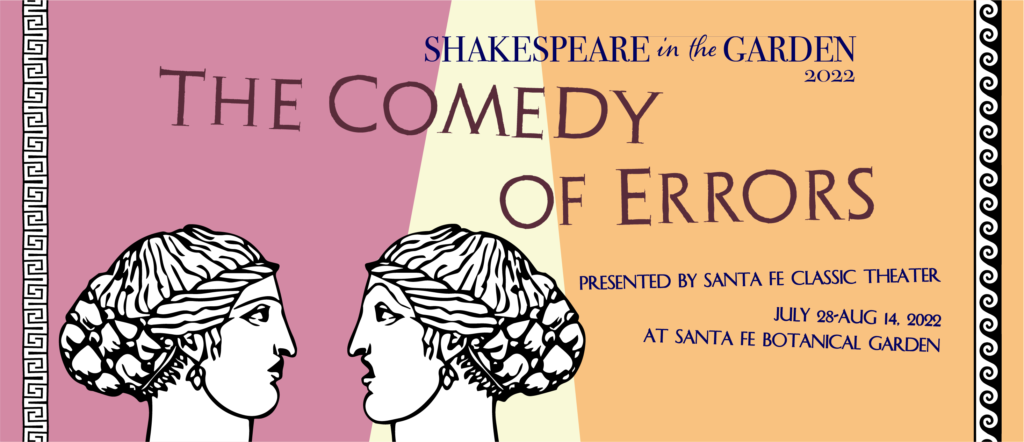August 2022
Article by Suzanne Burstall Cross
I have been a gardener for more than 50 years, and I’ve loved Shakespeare’s plays about that long. All the places I’ve lived, I’ve planted flowers Shakespeare’s plays show he loved, and most places, I’ve done Shakespeare on stage as well. So it was a thrill when Santa Fe’s Shakespearean expert Dr. Robin Williams asked me, back in 2018, to take an eroded bank behind her house and use it to showcase Shakespeare’s favorite flowers. What a challenge!
Robin is not only a teacher and reader of Shakespeare locally (with 20 years of adult Santa Fe students) but is also a co-founder of one of Santa Fe’s two major Shakespeare production companies, the International Shakespeare Center (ISC). I volunteer with both ISC and our other local production company, Santa Fe Classic Theater, which produces our summer Shakespeare in the Garden. So you could say I was putting my Shakespeare love to work with a vengeance!
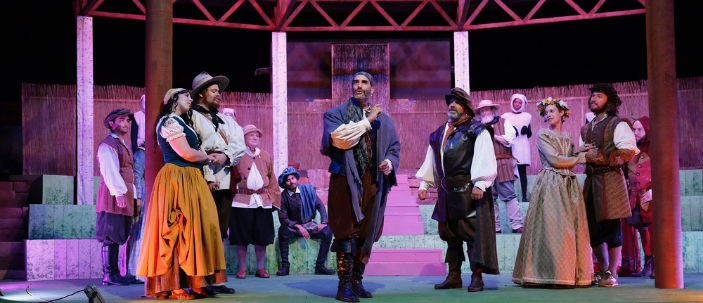
One of my best-loved quotes is Oberon’s beloved lyric from A Midsummer Night’s Dream, where the king of faeries talks of his queen’s forest hideaway:
“I know a bank where the wild thyme blows,
Where oxlips and the nodding violet grows,
Quite over-canopied with luscious woodbine,
With sweet musk-roses and with eglantine:
There sleeps Titania sometime of the night,
Lull’d in these flowers with dances and delight;
And there the snake throws her enamell’d skin,
Weed wide enough to wrap a fairy in…”
I also know that for the last century, scholars have loved rifling through the plays looking for particular flowers on Shakespeare’s mind and roses win hands down. He mentions roses in his plays and sonnets more frequently than any other flower, both for unsurpassed beauty and fragrance. Oberon’s woodbine, eglantine and musk roses are all varieties. He also loved wood violets and lavender, “The marigold, that goes to bed wi’ th’ sun”, as well as beloved household herbs like mint, fennel, marjoram, chamomile, rue and rosemary. With the guidance of Robin’s book on famous Elizabethan herbalists and gardens, Shakespeare’s Gardens by Jackie Bennett, I was good to start planning.
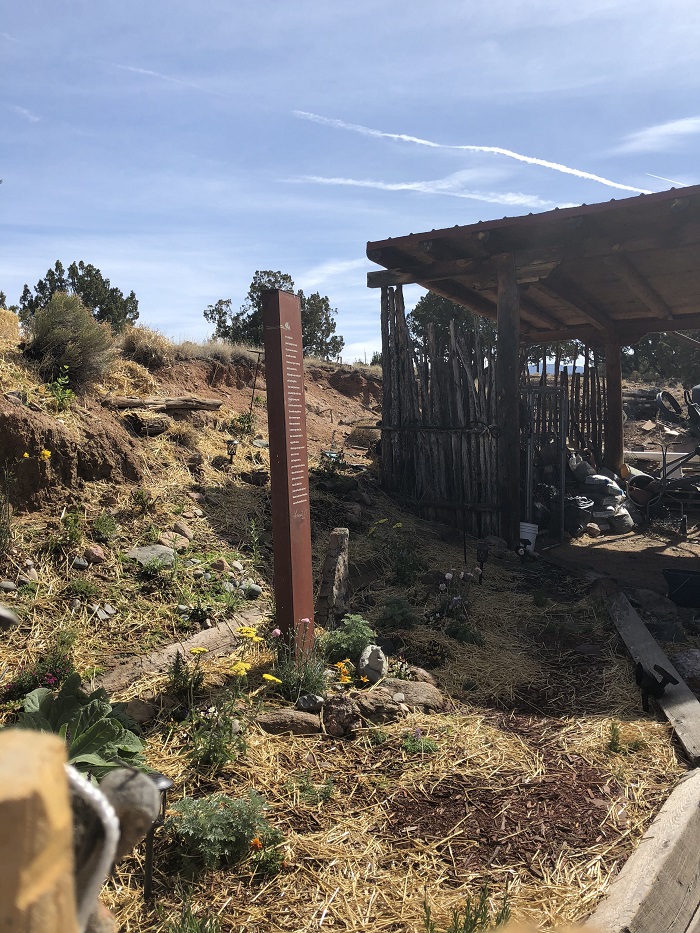
I started building the garden in March 2018, and my first big problems were erosion and dry spring weather. Shakespeare loved the lazy spring and summer clover growing around Stratford, so I planted bunches of white clover along the eroded bank, covered it with straw, and then step by step the plants themselves. Multiple varieties of roses, of course – Shakespeare mentions them over 70 times, his favorite. I found several modernized versions at David Austin’s, including the lovely musk rose and eglantine (Rosa rubiginosa), an annually-blooming soft pink beauty. Then several columbine, of course (Rocky Mountain version), with splashes of grey-green wormwood (artemisia) for contrast.
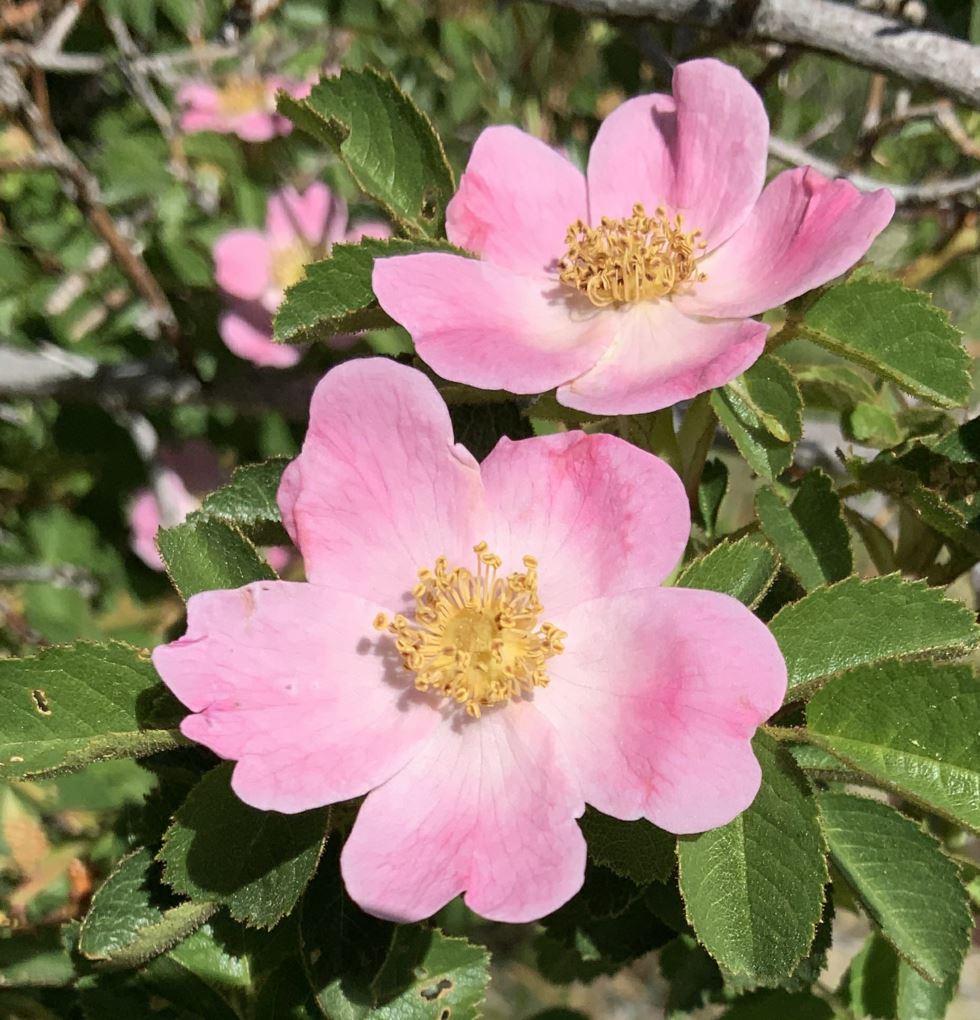
Sweetbriar rose, eglantine rose (Rosa rubiginosa). Photo by Cristina Salvador.
In the herb section, there was rosemary (“that’s for remembrance”), rue for mourning, fennel and foxgloves tucked in a shady corner for their medicinal properties. Although modern violets are bigger than in Shakespeare’s day, their soft blue shades in early spring are still special and I scattered them with a generous hand. Daisies and blue cranesbill and yellow broom for different months of color. Later, splashes of bright orange marigolds brightened the bed as well as offering some protection for insects disliking the smell! And everywhere, lavender, both for the sweet smell and for its stability in our dry climate and its comparatively late bloom.
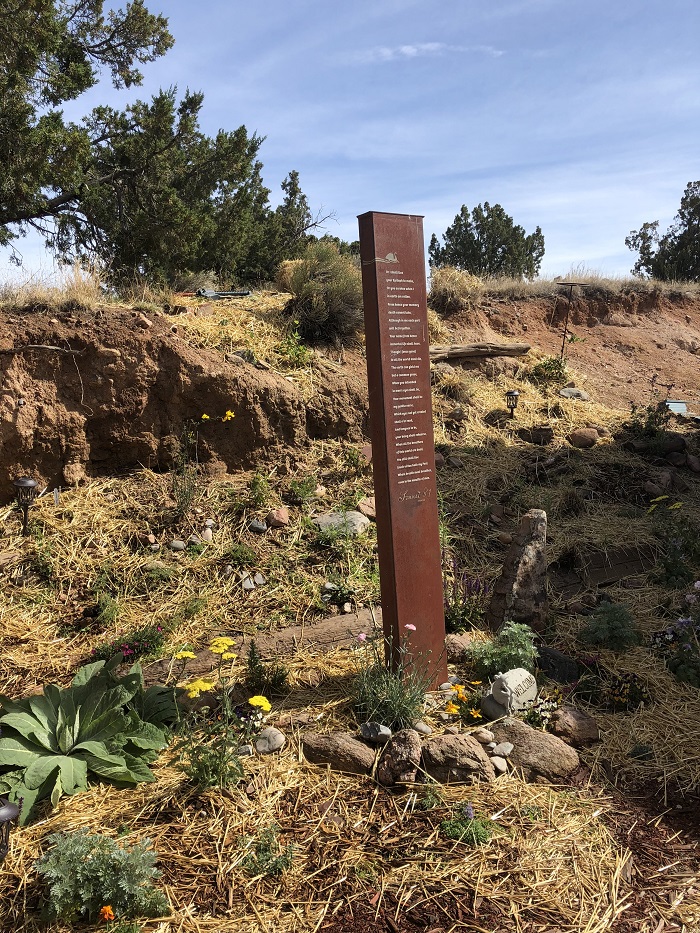
“There’s fennel for you, and columbines. There’s rue for you, and here’s some for me; we may call it herb of grace o’ Sundays. You must wear your rue with a difference. There’s a daisy. I would give you some violets, but they withered all when my father died. ”
— Hamlet
There were a couple of indigenous weed-plants that defied me by growing in the midst of my planned Shakespeareana, but I decided to live and let live. He was a tolerant writer!
I was glad of the clover, which held in the soil for early watering and created a lush background of green in the desert garden while helping the barren soil (we put in lots and lots of compost but it was still less than luxurious). As the summer advanced the whole bank, with its splashes of Elizabethan color, was a delight to work on and to smell – Shakespeare would not have approved of our scentless modern plants. On a hot summer’s night in the mountains, there’s something about the wafting scents of roses, lavender and violets that any lover of our Santa Fe Botanical Garden would recognize.
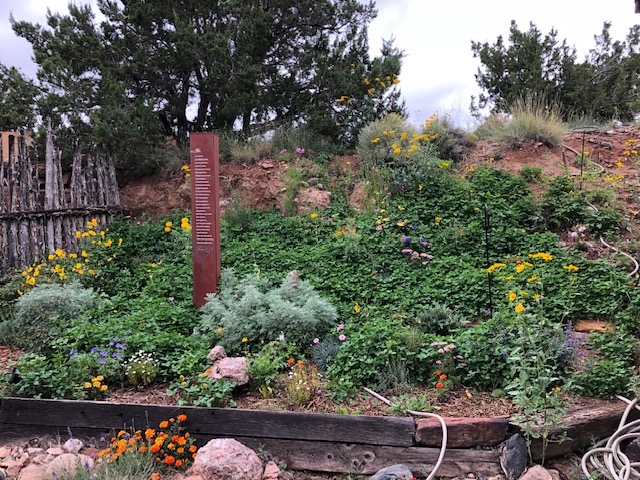
Thus when Shakespeare wrote “A rose by any other name would smell as sweet,” he would not have believed a Shakespeare garden could grow a half world away in the (then-Spanish!) desert. In his time, every plant and herb had a story and brought a quality to bear. What a way to celebrate the ongoing Santa Fe Shakespeare Festival and our fifth season of SHAKESPEARE IN THE GARDEN!
